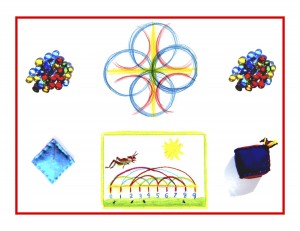Day 38
For one year, 365 days, this blog will address the Common Core Standards from the perspective of creating an alternate, ambient learning environment for math. Ambient is defined as “existing or present on all sides, an all-encompassing atmosphere.” And ambient music is defined as: “Quiet and relaxing with melodies that repeat many times.”
Why ambient? A math teaching style that’s whole and all encompassing, with themes that repeat many times through the years, is most likely to be effective and successful. Today’s post will focus on the Standard for Mathematical Practice #2. It’s paired with tomorrow’s (#3) standard as the second of 4 categories. These two are paired because they both focus on “reasoning and explaining.”
Blaise Pascal, a French mathematician, physicist, inventor, writer, and religious philosopher, invented the first digital calculator (adding machine) called the Pascaline, in 1642 to aid his father, a mathematician and tax collector. Pascal said, “The heart has its reasons which reason knows nothing of . . . We know the truth, not only by the reason but by the heart.”
Quite parallel to the philosophy and methodology of Waldorf Education, this says that a true education must draw from the wells of feeling and willing as well as thinking, which makes the human being whole. Translation re this standard: though it is necessary to reason abstractly and quantitatively, educators must not lose sight of the necessity to reason concretely and qualitatively when educating the young child. With that in mind, let’s dive in. Today’s standard is more dense and complex, therefore it will need to be broken up into smaller parts. The parts of the standard will appear in blue, and its ambient counterparts will follow.
Standards for Mathematical Practice
2. Reason abstractly and quantitatively.
Mathematically proficient students make sense of quantities and their relationships in problem situations.
As previously stated, making sense could have an expanded meaning here, in that all of the senses are fully engaged in math processing. And in order to fully apprehend relationships in problem situations, quantities must relate to qualities. A good example of this is the greater-less than sign introduced on Day 6 of this blog. The quality of greater is communicated by the wide open hand, while the quality of less than is shown as it diminishes to nothing. In the Waldorf first grade, the 4 processes are connected with the four temperaments, so as the children compute, they can get a sense of the processes’ deeper nature in how they relate to themselves and each other.
They bring two complementary abilities to bear on problems involving quantitative relationships: the ability to decontextualized – to abstract a given situation and represent it symbolically and manipulate the representing symbols as if they have a life of their own, without necessarily attending to their referents –
Whew, now that’s a mouthful. I am having trouble seeing a well-intentioned, very capable, nurturing Kindergarten teacher (or homeschooling parent) taking this to heart and translating it into coherent, lively lesson plans. With the painful consciousness that this requirement will be translated into questions on a test that s/he needs to be teaching towards. It takes time for a child to grow into him or herself sufficiently to be able to handle abstract symbols, since consciousness of the young child is concrete by nature. That is why I’ve recommended that numerical symbols (the Arabic numerals) not be used in Kindergarten, because it’s too great a leap from . . to 2. the Day 6 and Day 11 posts focus on how to add and subtract using counting lines rather than numbers. The symbols do indeed have a life of their own, and that goes for letters as well as numbers. Numbers are introduced in the first grade in conjunction with stories and geometric forms, to demonstrate their individual “personalities,” making math more friendly and approachable while giving the number symbols their due. All of the posts reviewed in the Free Play segment, Days 24-26, reflect an attention to gradually instilling a consciousness for calculation.
– and the ability to contextualize, to pause as needed during the manipulation process in order to probe into the referents for the symbols involved.
There’s little need to recontextualize if decontextualizing is minimal to nil. It can be all of a piece, with manipulation happening only in context. By the way, in the Waldorf system all 4 processes are introduced at once, very simply, in the first grade so that the whole picture is given from the very beginning.
Quantitative reasoning entails habits of creating a coherent representation of the problem at hand; considering the units involved,
All of the blog posts reviewed on Days 24-26 demonstrate coherent representations of calculation: counting stones, beans, shells and acorns, circles and sticks or flags, stories, and relevant movement.
attending to the meaning of quantities, not just how to compute them,
The jars and beans suggested in the Day 4 post build a foundation for an awareness of the unique quantity (and quality) of each number.
and knowing and flexibly using different properties of operations and objects.
All of the posts mentioned above (Days 24-26) attend to this, but especially Day 11. The operations signs for plus and minus are introduced as “and” and “take away” and the equal sign is introduced as “is” enabling calculation with objects.
Knowledge ensues in an environment dedicated to imaginative, creative knowing, where student and teacher alike surrender to the ensuing of that knowledge as a worthy goal. Tune in tomorrow for the Kindergarten Standard for Mathematical Practice #3.












